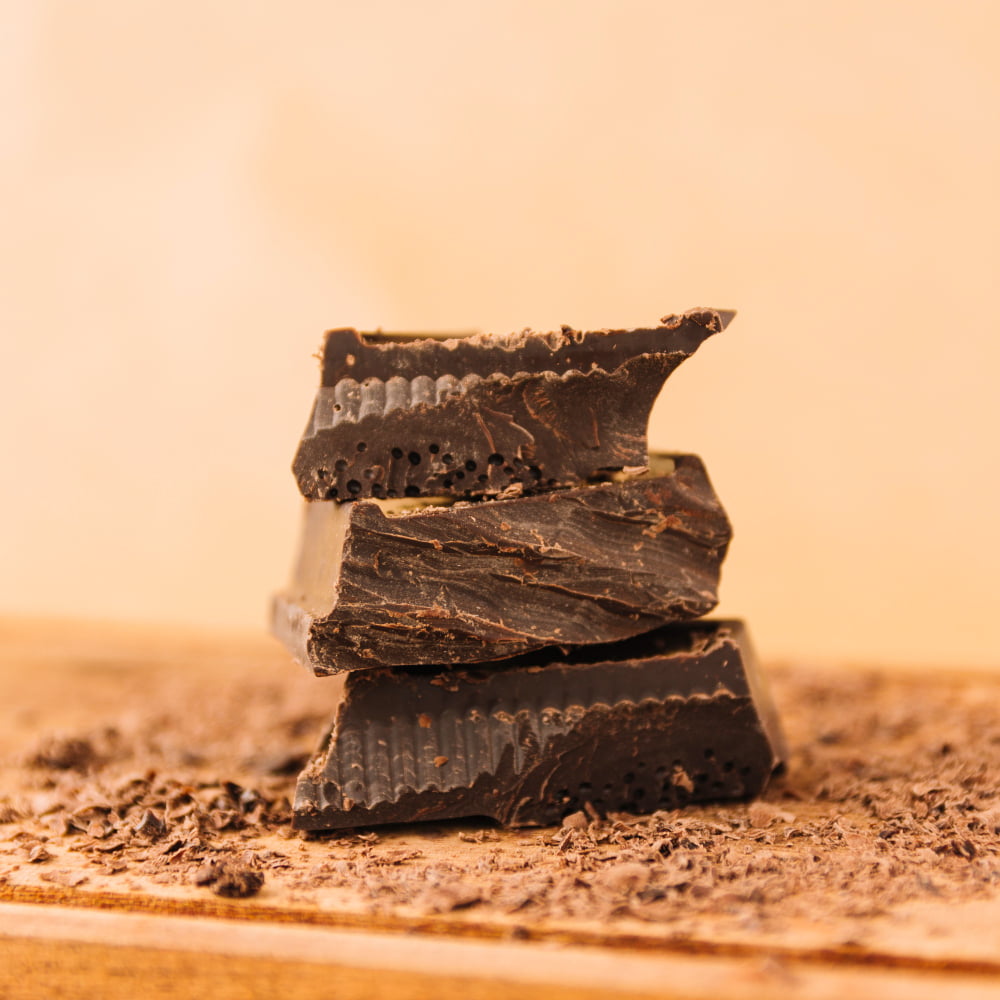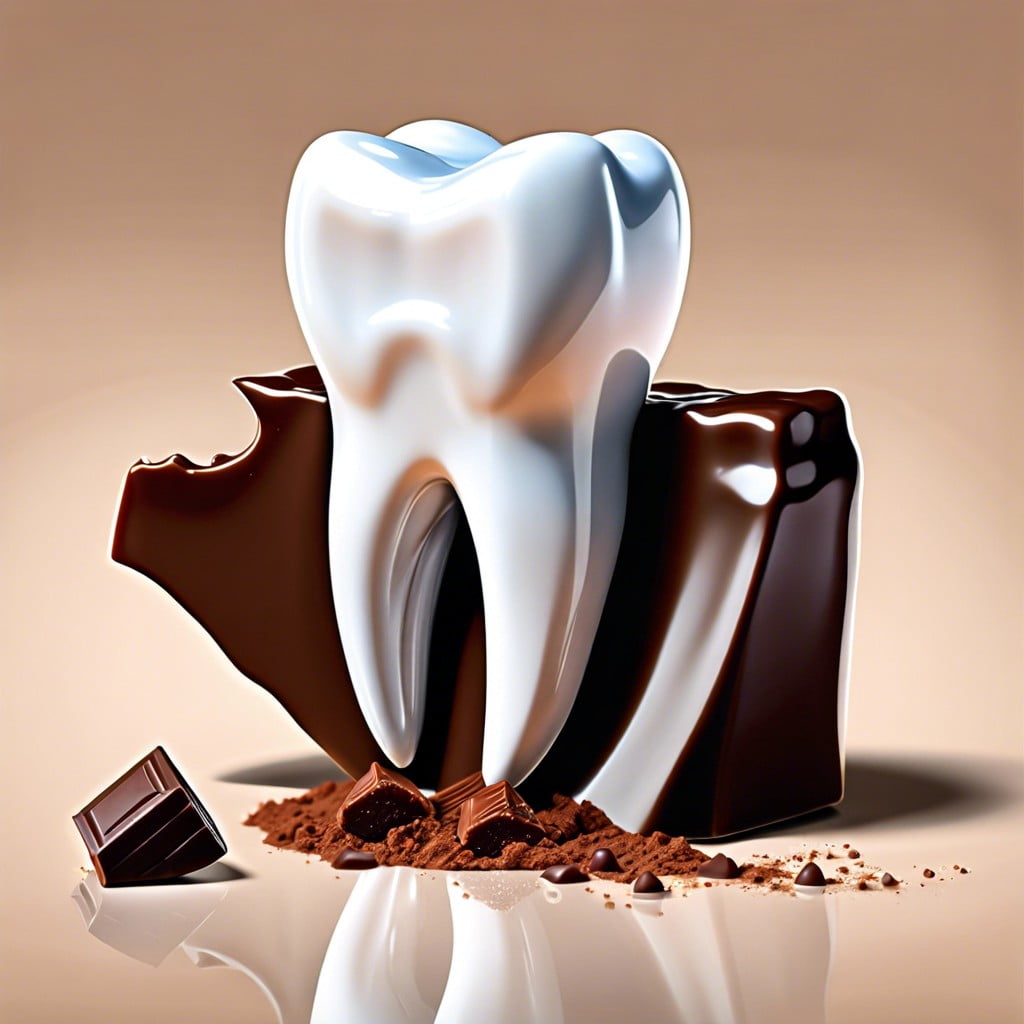This article will explain the scientific reasons behind women’s increased chocolate cravings during their menstrual cycle.
Key takeaways:
- Estrogen and progesterone fluctuations influence mood and cravings.
- Chocolate boosts serotonin levels and mood during hormonal changes.
- Magnesium levels decrease during menstruation, leading to chocolate cravings.
- The sensory pleasure of chocolate provides comfort and indulgence.
- A balanced diet can help manage menstrual symptoms and cravings.
Inside
Hormonal Fluctuations and Their Effects

During the menstrual cycle, estrogen and progesterone levels rise and fall dramatically, influencing mood, energy, and cravings. These hormonal fluctuations are significant:
- Estrogen peaks just before ovulation and drops afterward, often leading to a dip in serotonin, the feel-good neurotransmitter. This change can spark a desire for chocolate as it’s known to boost serotonin levels and mood.
- Progesterone rises in the week before menstruation begins, which may intensify cravings for sweet, carb-rich foods like chocolate to replenish energy levels.
- Fluctuating hormones can also impact stress hormones like cortisol, making comfort foods more appealing as a form of self-medication for emotional relief.
- The taste, smell, and texture of chocolate can release endorphins, contributing to a sense of well-being and temporary pain relief, which can be particularly appealing during menstruation.
Being aware of these patterns helps in understanding why cravings occur and can guide more mindful consumption of chocolate during this phase of the cycle.
Magnesium Levels and Chocolate Craving
During menstruation, the body’s magnesium levels may decrease. This mineral plays a critical role in over 300 enzyme reactions and can affect various bodily functions, including mood regulation and chocolate cravings. The decline in magnesium could be tied to cravings for chocolate as it contains this vital nutrient. Interestingly, dark chocolate is particularly rich in magnesium, which might explain its appeal during this time.
To address cravings related to magnesium, consider incorporating foods that are high in this mineral. Options include almonds, spinach, and whole grains, which can boost your intake without the added sugars found in chocolate. If chocolate remains the preferred source, opt for options with a high cocoa content to maximize the benefits while indulging responsibly.
The Role of Sensory Pleasure
The sensory experience of consuming chocolate goes beyond taste. The aroma, texture, and even the sound of breaking a chocolate bar can evoke a sense of indulgence and comfort. These pleasant sensory inputs activate the brain’s reward system, releasing feel-good neurotransmitters, such as dopamine, which can counteract mood swings and discomfort sometimes experienced during menstruation.
Subconsciously, women may seek out the complex sensory profile of chocolate as a form of self-soothing during the heightened emotional state associated with their period. The allure of this sensory indulgence can be a strong factor in craving chocolate specifically, as opposed to other sweet or comfort foods.
Impact of Diet On Menstrual Symptoms
A balanced diet plays a crucial role in managing menstrual symptoms, from mood swings to cramps. Some key points to consider:
- Complex Carbohydrates: Eating whole grains can help stabilize blood sugar levels, potentially reducing cravings and moodiness.
- Calcium-Rich Foods: Research indicates calcium can help reduce the severity of menstrual symptoms, so incorporating dairy or fortified alternatives can be beneficial.
- Water Intake: Staying well-hydrated can ease bloating and prevent dehydration, which may exacerbate headaches and fatigue during menstruation.
- Iron and Vitamin B: Leafy greens and lean meats replenish iron lost during menstruation and B vitamins support energy levels.
- Avoid Excessive Salt and Sugar: High intake can increase bloating and mood swings, making symptoms feel more intense.
- Limit Caffeine: Caffeine can constrict blood vessels, which may increase cramp intensity and contribute to tension.
Practical Tips for Period-Related Chocolate Cravings
Opt for dark chocolate with a high cocoa content to satisfy cravings while getting a dose of antioxidants and potentially less sugar.
Listen to your body’s hunger signals and portion wisely, allowing enjoyment without overindulgence.
Combine chocolate with healthy snacks like nuts or fruit to enhance nutritional value and satiety.
Stay hydrated, as sometimes cravings can be a sign of dehydration rather than a true need for chocolate.
Explore non-food methods to manage menstrual discomfort, such as gentle exercise, heat therapy, or relaxation techniques.
If chocolate cravings are overwhelming, consult with a healthcare provider to discuss possible dietary adjustments or to investigate underlying issues.




